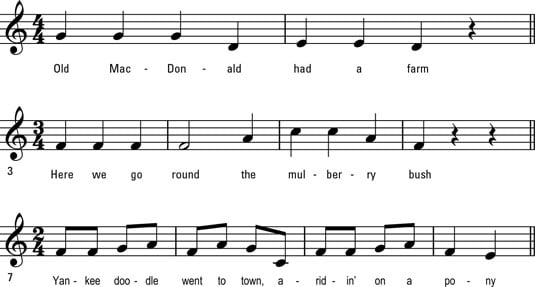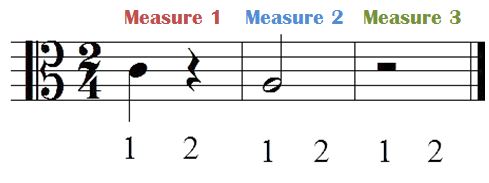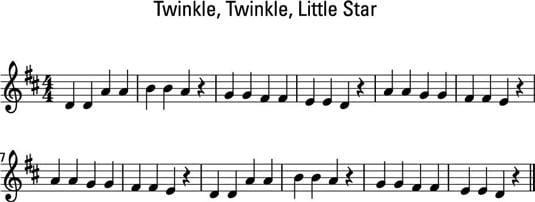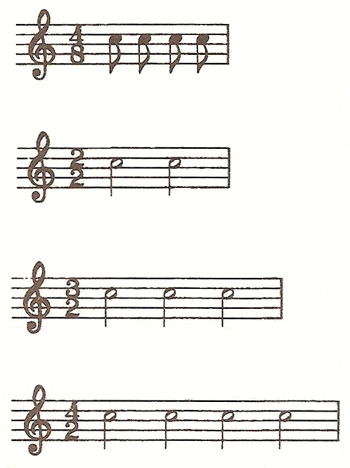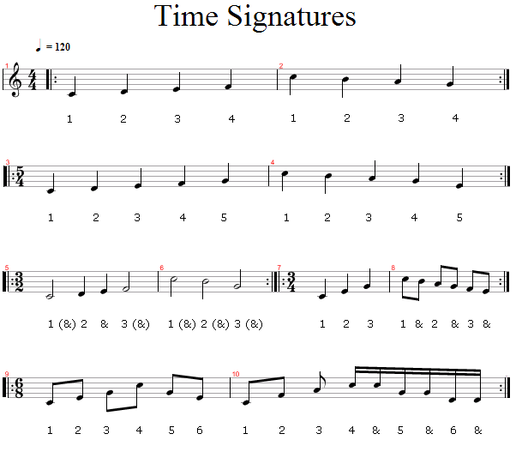4 4 And 2 4 Time Signature

Compositions written in 2 4 contain two equally strong accents on beats one and two.
4 4 and 2 4 time signature. But music is complex. The most frequently used time signatures are 4 4 and 3 4 though 2 2 and 6 8 time are not unusual. By convention two special symbols are sometimes used for 4 4 and 2 2. A 2 4 time signature for example tells us that there are 2 crotchet beats per bar.
4 2 time signature is classified as simple quadruple meter. Here is an example of a 4 2 time signature with the musical work glareanus dodecachordon from the french composer josquin des prés 1450 1521 for two tenor recorders. In general music written in 2 4 time is performed more slowly than music written in 3 4 or 4 4 time. 4 4 time because many traditional songs were written in 4 4 time this time signature is known as common time.
The most common simple time signatures are 2 4 3 4 and 4 4. So for a 4 4 time signature the top number means that there are 4 beats per bar and the bottom number indicates that we are using crotchets for each beat. The symbol is sometimes used for 4 4 time also called common time or imperfect time. A 2 4 time signature contains two quarter notes within a measure.
The 2 4 3 4 4 4 5 4 7 4 and 2 2 signatures are simple time signatures because each beat can be broken naturally in two equal parts and the unnatural thing would be to break each beat into three equal parts. The value of one beat is. What is common for 4 4 is to divide each beat into two eighth notes.
